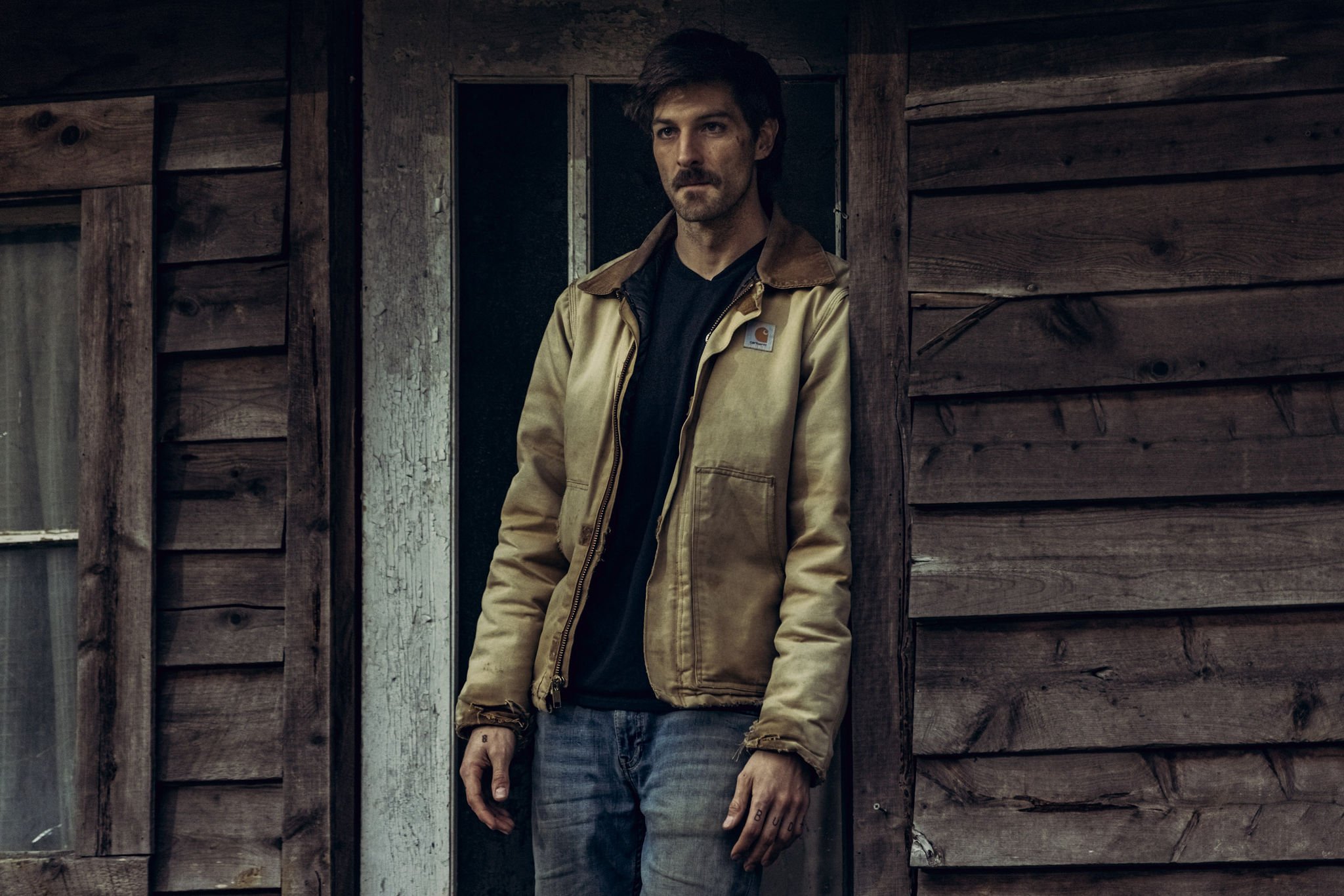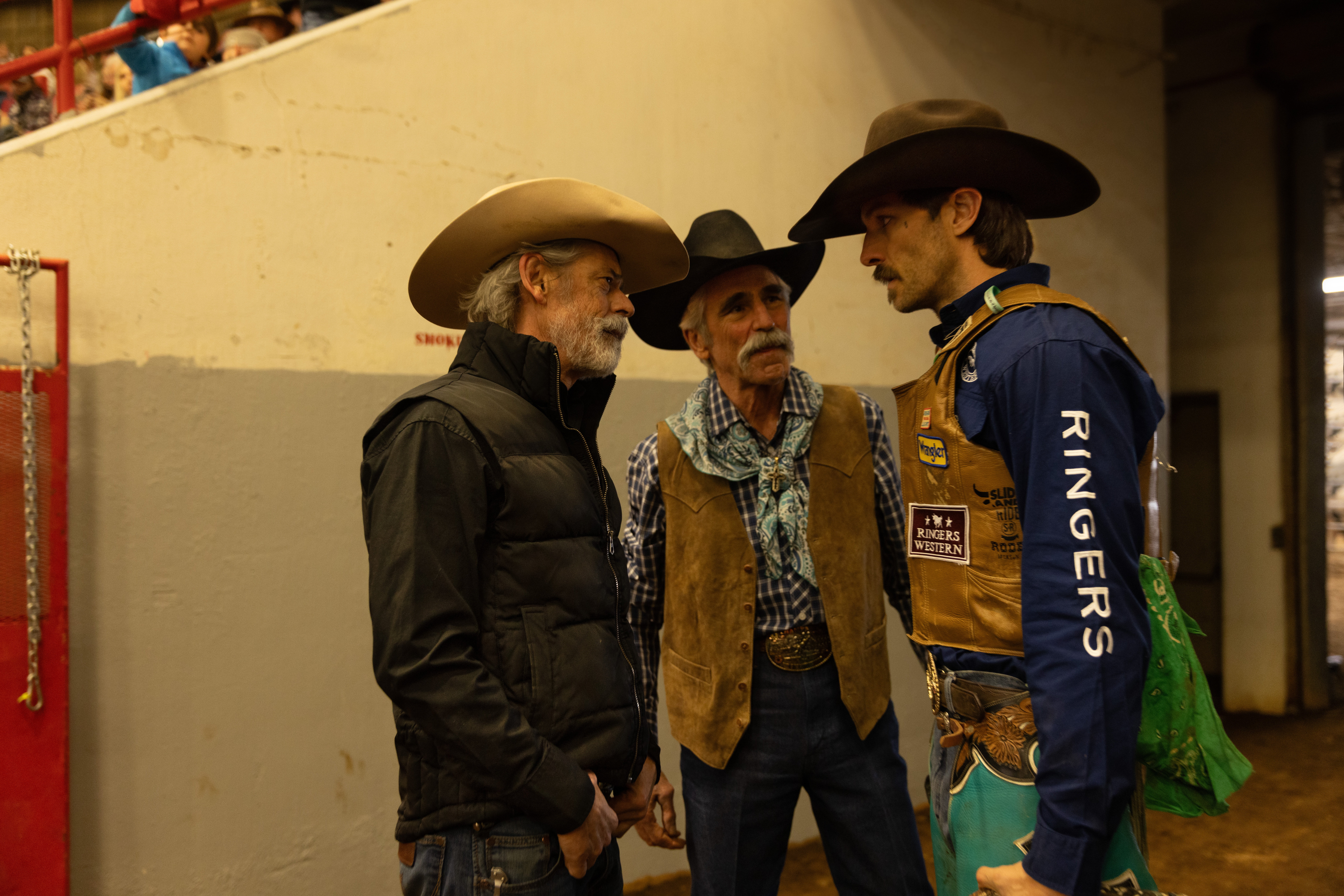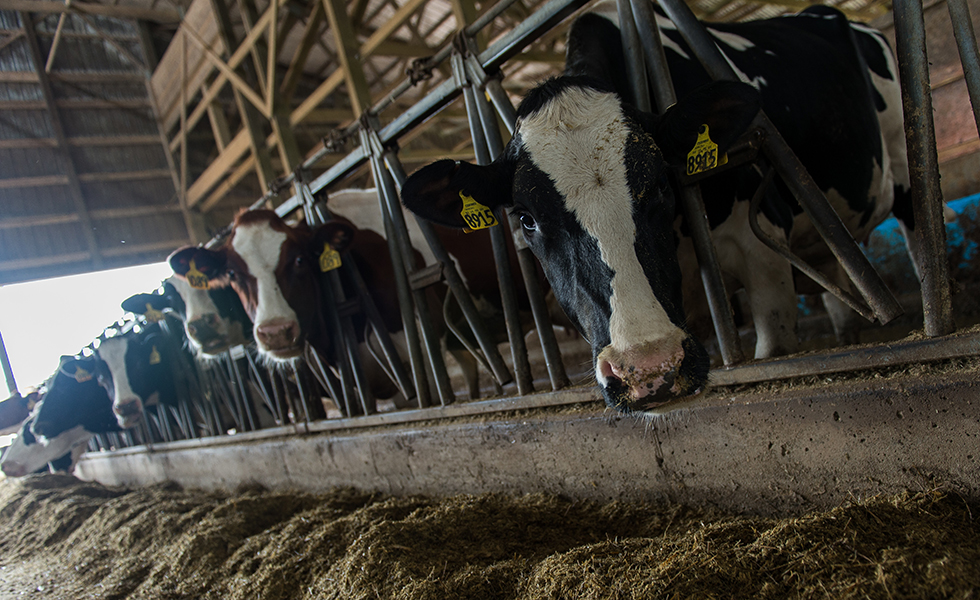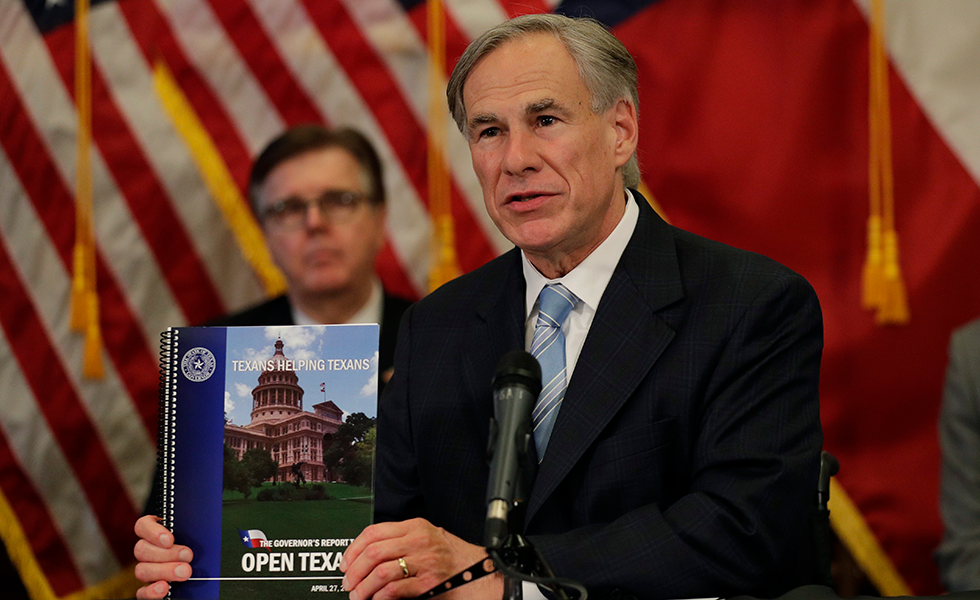
‘Ride’ Paints Cowboy Life in Shades of Gray
A new movie set in Stephenville complicates, without vilifying, one of our state’s central mythic figures.

Writer, director, and actor Jake Allyn grew up in Dallas, a city whose professional football team (as well as my nearby high school) proudly flies the banner of the cowboy, one of the most enduring, and caricatured, symbols of Texas identity.
Allyn’s new feature film, Ride—which follows multiple generations of bull riders in Stephenville, long known as the “Cowboy Capital of Texas”—offers a nuanced portrayal of “cowboy culture,” one that puts the oft-heralded values of stoicism and pride in conflict with societal issues such as addiction, financial stress, and contact with the criminal justice system.
The film got some early buzz, winning the audience award for best feature at the Dallas International Film Festival before its wider release on June 14. It stars real-life rodeo stars C. Thomas Howell and Forrie J. Smith, who brought a level of authenticity to their roles.
Howell plays John Hawkins, who’s married to the local sheriff Monica Hawkins (played by Annabeth Gish), and Allyn, the director, portrays their troubled son Peter. The movie follows the family as John and Monica struggle with the price tag of the life-saving treatment necessary for their sick daughter (played by Zia Carlock) and the disruption that happens when their estranged son Peter is released from prison after four years. Having run out of legal ways to pay the medical bills, John and Peter decide to go around the law, and every member of the Hawkins family must grapple with the consequences.
I first watched the film at an advance screening at the Cowtown Coliseum at the Fort Worth Stockyards, an operational rodeo venue. More than 100 white folding chairs were set up on the loose red-brown dirt floor. The bar at the back was serving ice cold cans of Coors Light, and a variety of whiskey bottles lined the counter. In defiance of the dirt floor, a good portion of the audience wore white cowboy hats for the occasion. In opening remarks, Allyn talked about his desire for the movie to accurately portray the “western way of life.”
Here’s where I admit a certain level of trepidation on my part. In the film’s preview, and in promotional material, things like “western culture”, “cowboy heritage”, and “American values” are invoked. I was prepared for a one-note love letter to aspects of the Texas identity I have real problems with. But what the audience got was fairly nuanced—as Allyn later told me was his primary goal.
“I hope that I told a story about the good and the bad that comes with that way of life,” he told me. “I really wanted to hold up a mirror to the cowboy, to honor the cowboy hat, if you will, but also shine a light on some of the issues in that world.”

What might have been taboos in cowboy flicks of decades past are immediately broken in this movie. In an early scene, John tells his other son Noah (portrayed by Josh Plasse) that he loves him. The characters aren’t unflinchingly stoic—they’re angry, they’re sad, they’re hopeless, they’re conflicted, and they’re tender, silly, and loving with the people they love. Early on, the characters are shown with their masks down: The sheriff brushes her teeth in her daughter’s hospital room; the world-weary father wakes up alone in his daughter’s bed, cradling her rainbow unicorn stuffed animal.
The movie attempts to be an authentic representation of rodeo life. Allyn told me he wanted to make a Friday Night Lights for rodeo. Parts of the movie were filmed on location at actual rodeos, where real cowboys can be seen competing. Some scenes show Allyn’s character practicing bull-riding techniques, furiously thrusting his hips and waving his hands as if he were on a bucking bronco. These appear to be real exercises, as they aren’t particularly elegant or cinematic.
Howell, the son of a professional bull-rider and an award-winning cowboy in his own right, said he is sensitive to the tropes and mischaracterizations of the rodeo life he sees in film. He told me he was firm that the movie had to avoid falling into those traps.
“My goal from the beginning to the end was to make sure it was as authentic as possible,” he said. “That goes along with everything from wardrobe right on down to the way cowboys talk, the way they walk, the way they carry themselves.”
The film was well-made, with good sound and visual quality. (The scenery was beautiful—even though the end-credits reveal the movie was filmed not in Texas but in far-off Tennessee.) The editing moved the story along seamlessly.
But what was most striking about the film was its unflinching look at a family in the midst of multiple crises. Relationship dynamics strain under the weight of it all—husband-wife, brother-sister, father-son. Through the family’s splintering, the audience can see the ways social pressures lead so many Texans to lose their grip.
Peter, the troubled son, leaves prison with six months of sobriety under his belt, but it isn’t long until he relapses and the audience watches his quick decline into heavy drug use. His addiction is met with empathy and understanding from his grizzled grandfather (Smith’s character). The damage of Peter’s substance use is clearly shown throughout the film, but he isn’t vilified for it. Addiction is a rampant problem in Texas—opioid addiction is increasing rapidly in urban and rural areas—but it isn’t a new phenomenon. Notably, the movie depicts all three generations of Hawkins men struggling with substance abuse.
Texas’ criminal justice system is also portrayed without moral grandstanding. People on either side of the law are humanized, portrayed as flawed people reacting to the circumstances they’re in. The effects of incarceration on individuals and their families takes center-stage, as the Hawkins family comes together after years of estrangement and Peter struggles to re-acclimate to his community.
The central conflict of the film comes from the family’s inability to keep up with the financial burdens imposed by the modern U.S. medical system. Desperation arises when survival comes down to a question of payment. Alongside this is the financial distress of modern cowboys and the towns in which they live.
Allyn recalled the moment he decided the film should be set in Stephenville. He had been driving around Texas, scouting locations, and he saw that the “Welcome to Stephenvlle” sign at the city limits was bent over, “like a tornado had come by or something.”
“It was literally barely holding on, and the second I saw that sign, I was like, ‘That looks like a bull-rider halfway off his bull, about to get tossed, and desperately holding on for dear life,’” Allyn told me. “That immediately became a metaphor for the whole movie. … Stephenville, the world that the movie takes place in, is barely holding on, and every one of the characters, in their own way, is barely holding on.”



